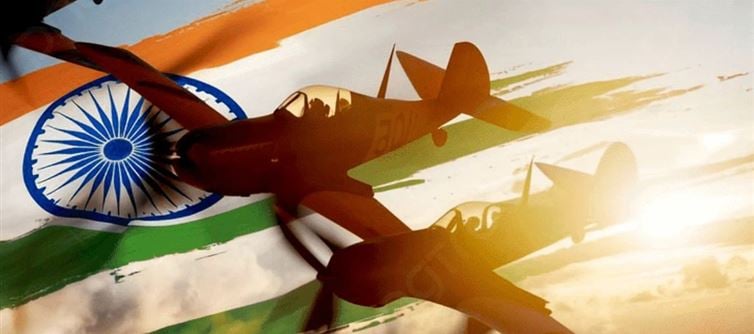
air power is no longer just a military asset — it is the backbone of global dominance.
From the early 20th century to today, aerial supremacy decides conflicts, shapes borders, and signals national strength.
According to the latest 2025 data from Global Firepower and WDMMA, the United States remains the undisputed leader, russia follows closely, and india has surged ahead of china to claim the third spot in the world’s air power rankings.
Meanwhile, pakistan doesn’t even make the top 10. This is not just a statistic — it’s a geopolitical statement.
✈️ US air Dominance: The Unmatched Titan
The united states air Force dominates the skies, controlling nearly 40% of global military spending.
Its industrial base, multi-role aircraft, strategic bombers, advanced helicopters, and massive transport fleet make it capable of projecting power anywhere in the world.
The US air Force also boasts specialized tanker, training, and special missions divisions, which are constantly expanding.
Simply put, no country can challenge America’s air supremacy today.
🚀 Russia: The Relentless Contender
russia ranks second in air fleet strength, holding roughly one-third of US capabilities.
While smaller than the American machine, Russia’s air force combines strategic bombers, fighter jets, and advanced missile-carrying aircraft to assert regional dominance.
Its modernization programs and advanced aircraft like the Su-57 ensure that russia remains a formidable global player in aerial warfare.
🛡️ india Surpasses China: Sky Power on the Rise
According to WDMMA rankings, india now stands ahead of China, claiming the third spot with a Total Vehicle Rating (TVR) of 69.4, while China’s TVR is 63.8.
This leap reflects India’s investment in multi-role fighters, advanced helicopters, surveillance drones, and indigenous platforms like Tejas.
India’s air Force also demonstrated strategic prowess during Operation Sindoor, where it successfully neutralized threats and asserted air dominance in sensitive regions.
⚡ China’s air Power: Advancing but Lagging
china has rapidly modernized its air force with cutting-edge technology and expanding fleet numbers, but India’s strategic planning, operational readiness, and geographic advantage give it the edge.
While china continues to invest heavily, India’s quality over quantity approach — combined with real-world operational experience — ensures that the Chinese air force remains behind india in effectiveness.
💣 Pakistan’s air Force: The Forgotten Contender
Pakistan’s air power doesn’t even crack the top 10 globally, highlighting a stark contrast with India’s growing capabilities.
While pakistan continues to invest in older aircraft and regional defense systems, it lags far behind in multi-role aircraft, strategic bombers, and indigenous programs.
In modern aerial warfare, this gap is not just numerical — it is existential.
💰 Military Budgets on the Rise: The Global Arms Race
Global military expenditure is projected to reach $2.44 trillion in 2023, a 6.8% increase over 2022, driven by tensions in Ukraine, the Middle East, and Indo-Pacific regions.
Countries are upgrading their air forces aggressively to maintain strategic advantage and project power internationally.
India’s rising budget and focused investment in aviation technology, indigenous production, and fleet expansion have cemented its status as a global air power leader.
🛫 The Strategic Advantage of air Power
air supremacy isn’t just about aircraft numbers — it’s about reach, readiness, and operational efficiency.
India’s ability to project power, secure borders, and execute precision operations gives it a qualitative edge over larger but less agile air forces like China’s.
This capability ensures india can respond rapidly to threats, influence regional stability, and assert strategic deterrence.
🔥 CONCLUSION — india TAKES FLIGHT
India’s air Force is no longer just a regional force — it is a global powerhouse, surpassing china and leaving pakistan in the shadows.
While the US and russia remain the titans, India’s strategic investments, operational readiness, and technological edge ensure it is the third most formidable air power in the world.
In the 21st century, dominance in the skies isn’t optional — it is a decisive factor in national security, global influence, and strategic deterrence.
India has taken flight, and the world is watching.




 click and follow Indiaherald WhatsApp channel
click and follow Indiaherald WhatsApp channel